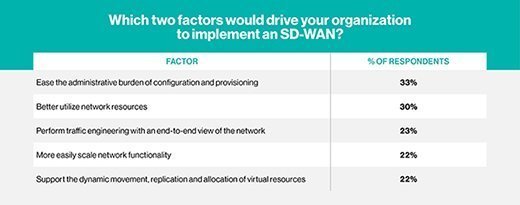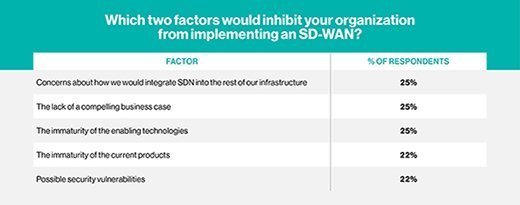
alphaspirit - Fotolia
When will SD-WANs 'cross the chasm'?
It can be difficult to separate hype from reality, especially when it comes to SDN technology. Here, analyst Jim Metzler explores when software-defined WANs might go mainstream.
Over the last several years there has been a continual onslaught of SDN-related articles and reports. While the initial discussion of SDN focused on the data center, recently there has been a growing discussion of SDN's potential to transform wide area networks. Given that SDN has been a hot topic for years and that it has yet to enjoy broad deployment, it is understandable if network professionals have become somewhat SDN-weary -- likely assuming that software-defined WANs won't become mainstream for several years. They then run the risk of failing to sufficiently analyze and consider a potentially valuable new WAN architecture. To put the likely adoption of SD-WANs into perspective, this expert tip will briefly discuss what it takes for a technology or architecture to cross the chasm, and it will analyze how close SD-WANs are to making that leap.
In his book entitled Crossing the Chasm: Marketing and Selling High-Tech Products to Mainstream Customers, Geoffrey Moore presented what has become a widely adopted framework that describes what it takes for a technology or architecture to go from being highly discussed to broadly deployed.
Moore argued that the early adopters of a technology are typically the organizations that identify the primary use cases of a technology, and have both the capability and the orientation to work through the issues that are associated with implementing early-stage technologies. In contrast, the early majority typically adopts a technology once the use cases have been identified and validated and once the solutions are stable.
I recently surveyed 131 IT professionals and published the results in The 2016 Guide to SDN and NFV. I gave the survey respondents a dozen factors and asked them to indicate the two factors that would drive their organization to implement an SD-WAN. The top five factors, and the percentage of survey respondents who indicated that factor, are shown in Table 1.

As shown in Table 1, easing the administrative burden of configuration and provisioning is the primary factor driving interest in SD-WANs, followed closely by better utilizing network resources. Both of these factors can be associated with reducing cost. But while reducing Opex and reducing Capex were two of the possible answers to the survey question, neither bubbled to the top. This survey data suggests that network organizations don't currently see a strong economic argument for implementing an SD-WAN. That is concerning because the easiest way for a network organization to justify making an investment is to show real cost savings.
The survey respondents were also asked to indicate the two factors that would inhibit their organization from implementing an SD-WAN. The top five factors are shown in Table 2.

Based on Moore's framework, technologies and architectures don't cross the chasm until they are stable. Given the apprehension shown in Table 2 about possible security vulnerabilities, as well as the immaturity of the technologies and products in question, it appears as if SD-WANs have a ways to go yet. In addition, the concern about the lack of a strong business case is further evidence that compelling use cases have not yet been validated.
I don't believe SD-WANs will cross the chasm in the next 12 months. What I do believe is that over the next 12 to 18 months there will be a significant uptick in the number of SD-WAN requests for information that are distributed and the number of SD-WAN proofs of concept (POCs) that are conducted. The success of those POCs will go a long way towards determining if SD-WANs cross the chasm in late 2017 or sometime in 2018.








